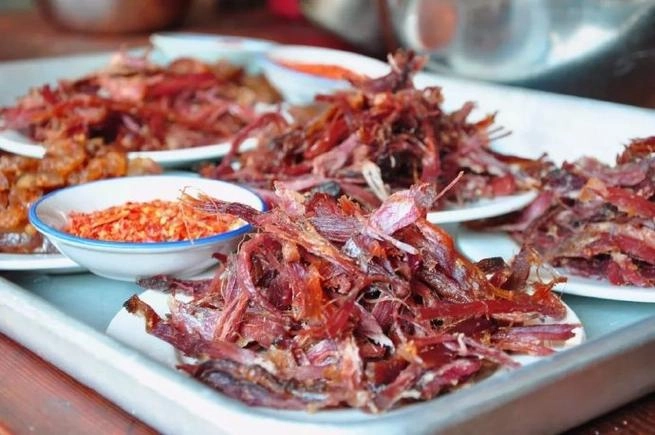The Legacy and Flavor of Danba Ham: A Culinary Gem from Kanba Region of Sichuan
Introduction:
As a culinary connoisseur, I am thrilled to introduce you to a delicacy that is as much a part of the cultural heritage as it is a gastronomic delight – the Danba ham from the Kanba region of Sichuan province. This region, known for its rugged beauty and rich cultural tapestry, is also home to a unique culinary tradition that has been passed down through generations.
Origin and Cultural Background:
The Danba ham, a specialty of the Kanba region, has a history deeply rooted in the local Tibetan culture. It is believed to have originated as a means of preserving meat for long periods, especially during the harsh winters. Over time, this preservation method evolved into an art form, with families proudly crafting hams that would be hung to dry for years, becoming a symbol of wealth and status.
Ingredients and Preparation:
The making of a Danba ham is a labor of love and patience. Only the finest pork legs are selected, typically from indigenous pigs that have been raised on a diet of natural grains and vegetables. The curing process is meticulous, involving a blend of traditional spices and salts, which are rubbed into the meat to draw out moisture and enhance flavor. The hams are then hung in well-ventilated areas, where they are subjected to the natural elements for a minimum of three years.
Taste and Texture:
The result of this lengthy curing process is a ham that is tender, yet firm to the touch. The meat is a deep, rich red, with a translucent layer of fat that adds a silky texture to each bite. The flavor is complex, with a balance of saltiness, sweetness, and a hint of smokiness from the natural drying process. The texture is tender and moist, with a chewiness that is both satisfying and addictive.
Visual Description:
A Danba ham is a sight to behold. The outer layer of the ham is often covered in a fine layer of white mold, which is not only safe to consume but also adds to the depth of flavor. The ham itself is a beautiful shade of dark red, with a glistening layer of fat that envelops the lean meat. When sliced, the cross-section reveals a marbled pattern of fat and meat, promising a mouthful of rich, umami flavors.
Representative Dishes and Culinary Uses:
Danba ham is a versatile ingredient that can be enjoyed in a variety of dishes. It can be thinly sliced and served as a cold cut, allowing its rich flavors to shine on their own. It is also a key ingredient in hot dishes such as stir-fries and stews, where its robust flavor complements a range of vegetables and other meats. The ham can also be used in soups and broths, infusing them with a deep, savory taste.
Culinary Characteristics:
The Danba ham is characterized by its unique aging process, which results in a one-of-a-kind flavor profile. The extended drying time allows the flavors to intensify and meld, creating a ham that is both rich and nuanced. Its ability to be consumed raw, after three years of curing, is a testament to the care and craftsmanship that goes into its production. It is not just a food item but a piece of living history, a culinary tradition that continues to thrive in the modern world.
Conclusion:
The Danba ham is more than just a food; it is a testament to the culinary prowess and cultural richness of the Kanba region. It is a delicacy that has stood the test of time, a bridge between the past and present, and a flavor that is uniquely its own. For those who appreciate the art of fine food, the Danba ham is a must-try experience, a journey through taste that is as memorable as it is delicious.
